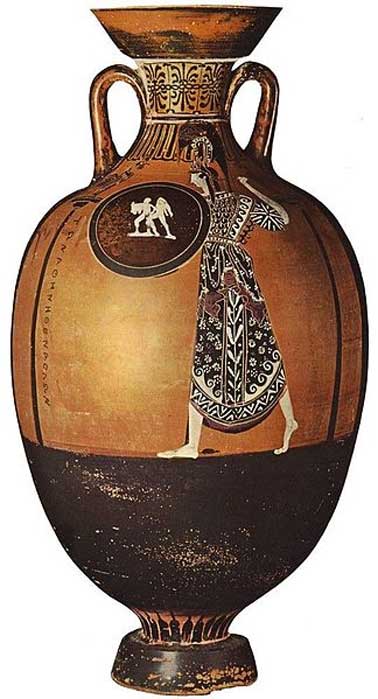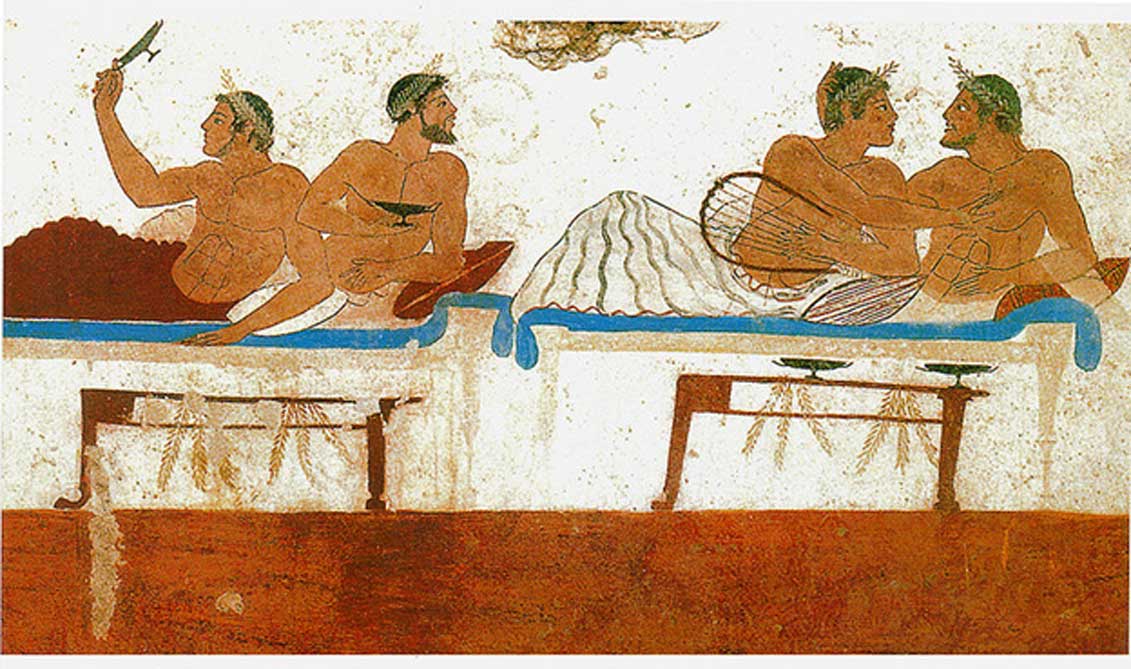Tyrant Killers of Athens: The Tyrannicides, Harmodius and Aristogeiton
Harmodius and Aristogeiton: the citizens of Athens knew the names of these lovers all too well in the 6th century BC. But it isn’t their love story that captured attention. These two men are remembered in history for how they received their nickname - the Tyrannicides.
Harmodius and Aristogeiton are most famous for carrying out the assassination of Hipparchus, a member of the Athenian ruling class. The story of Harmodius and Aristogeiton has been related by many ancient authors, including Thucydides and Herodotus.

Harmodius and Aristogeiton. Attic black-figure vase. (Public Domain)
Harmodius, Aristogeiton, and the Tyrant(s) of Athens
Little is known about Harmodius and Aristogeiton prior to their assassination of Hipparchus. According to the ancient historian Herodotus, the two were Gephyraeans, a clan that claimed to have originated in Eretria. Herodotus goes on to state that his own investigations show that the members of this clan were actually Phoenicians who accompanied Cadmus when he traveled to Boeotia. According to Thucydides, Harmodius was a good-looking youth, whilst Aristogeiton was a middle-aged citizen of Athens.
- Deadly Strategies and Ruthless Tactics of the Ancient Assassins
- Masyaf Castle, the Seat of the Assassins
- New Assassin’s Creed Has the Most Realistic Reconstruction of Ancient Egypt Ever Produced

The statues of Harmodius and Aritogeiton, the Tyrannicides. Source: virtusincertus/CC BY 2.0
As for Hipparchus, he was the son of Peisistratos, a tyrant of Athens. After his father’s death, Hipparchus and his brother Hippias took control of the city’s government. According to some sources, such as Herodotus and Thucydides, it was Hippias who succeeded his father as tyrant. Thucydides adds that it is commonly, though wrongly, believed that Hipparchus became the tyrant of Athens. According to Aristotle, Hippias and Hipparchus controlled the affairs of Athens, though it was really Hippias who was running the show. Hipparchus, on the other hand, was an indulgent figure who enjoyed the finer things in life.
Rejection and Revenge
Though he was one of the most powerful men in Athens, Hipparchus was not able to attain all that he desired. One of the “possessions” Hipparchus wanted was Harmodius, whose good-looks attracted him. According to Thucydides, the youth rejected the advances of Hipparchus and told Aristogeiton about what happened. This enraged Aristogeiton, who began to plot the assassination of Hipparchus and his brother. In the meantime, Harmodius was approached by Hipparchus once more, though his advances were unsuccessful once again. Unwilling to use violence to avenge himself, Hipparchus decided to insult Harmodius in a covert way. The tyrant’s brother supposedly invited Harmodius’ sister to be a basket bearer in the procession at the Panathenaic Festival, just so that he could humiliate her by stripping her of this honor in public.

Panathenaic amphora. (Public Domain)
The Assassination Plot Takes an Unexpected Turn
Harmodius’ motivation for the assassination of Hipparchus was to avenge the soiled honor of his sister, whilst Aristogeiton undertook this risky venture because of his love for Harmodius. The two men plotted to assassinate Hipparchus and his brother during the Panathenaic Festival.
On the day of the festival, Harmodius, Aristogeiton, and their co-conspirators hid daggers in the ceremonial myrtle wreaths that were used during the festival. When the assassins saw one of their own conversing in a friendly manner with Hipparchus, they panicked, as they believed that he was revealing the plot to the tyrant’s brother. As a result of this, they acted before the appointed time, thus ruining their initial plan. The assassins succeeded in killing Hipparchus, but not Hippias. Harmodius was killed in the process, whilst Aristogeiton escaped for a while before being captured, and executed.

Death of the tyrant Hipparchus, by the Syriskos Painter, 475-470 BC. (Public Domain)
Aristotle Adds a Second Murder to the Story
In Aristotle’s version of the story, Aristogeiton was captured and tortured by his captors, who hoped that he would reveal the identities of the other assassins. The assassin pretended to co-operate, and asked for Hippias’ handshake as a guarantee for safety. As Aristogeiton received the tyrant’s hand, however, he is said to have reproached him for shaking the hand of his brother’s killer. Furious, Hippias killed Aristogeiton himself.
- The Venomous Visha Kanyas Versus the Thugs: Which Would You Prefer Were Real?
- Thuggees – the Cult Assassins of India
- Secret Stash of Lethal Poisons Hidden in 17th Century Book. Was This Really an Assassin's Cabinet?
Honoring the Tyrannicides, but Not as Heroes
Harmodius and Aristogeiton were later honored as the Tyrannicides for their assassination of Hipparchus. It has been pointed out by ancient writers, however, that the Tyrannicides did not set out to free Athens from the tyranny of Hipparchus and Hippias; suggesting they have been erroneously honored as heroes.
‘Hero’ would not be the right word as both men were motivated by a desire to avenge personal wrongs done to them by the tyrants - Hipparchus in particular. Moreover, the killing of Hipparchus did not end tyranny in Athens. Conversely, it made it worse, as Hippias, who became somewhat paranoid after his brother’s assassination, became harsher in his rule. It was only four years after the assassination of Hipparchus that Hippias was overthrown by the Spartans. Following the reforms of Cleisthenes, Athens became a democracy.

Modern bust of Cleisthenes, ‘The Father of Greek democracy.’ (ohiochannel.org)
Top image: Detail of a Fresco from the North wall of the Tomb of the Diver in Paestum, Italy depicting Pederastic couples at a symposium. (Public Domain)
By Wu Mingren
References
Aristotle, Athenian Constitution [Online]
[Rackham, H. (trans.), 1935. Aristotle’s Athenian Constitution.]
Available at: http://www.perseus.tufts.edu/hopper/text?doc=Perseus:text:1999.01.0046
Herodotus, The Histories
[Waterfield, R. (trans.), 1998. Herodotus’ The Histories. Oxford: Oxford University Press.]
Lendering, J., 2017. Harmodius and Aristogeiton. [Online]
Available at: http://www.livius.org/articles/person/harmodius-and-aristogeiton/
Slater Memorial Museum, 2018. The Tyrannicides of Athens, Harmodius and Aristogeiton. [Online]
Available at: http://www.slatermuseum.org/cast/the-tyrannicides-of-athens-harmodius-and-aristogeiton/
Smith, A. C., 2003. Athenian Political Art from the fifth and fourth centuries BCE: Images of Historical Individuals. [Online]
Available at: http://www.stoa.org/projects/demos/article_portraits?page=7&greekEncoding=
The Editors of Encyclopædia Britannica, 1998. Harmodius and Aristogiton. [Online]
Available at: https://www.britannica.com/biography/Harmodius
Thucydides, The Peloponnesian War
[Hammond, M. (trans.), 2009. Thucydides’ The Peloponnesian War. Oxford: Oxford University Press.]



















